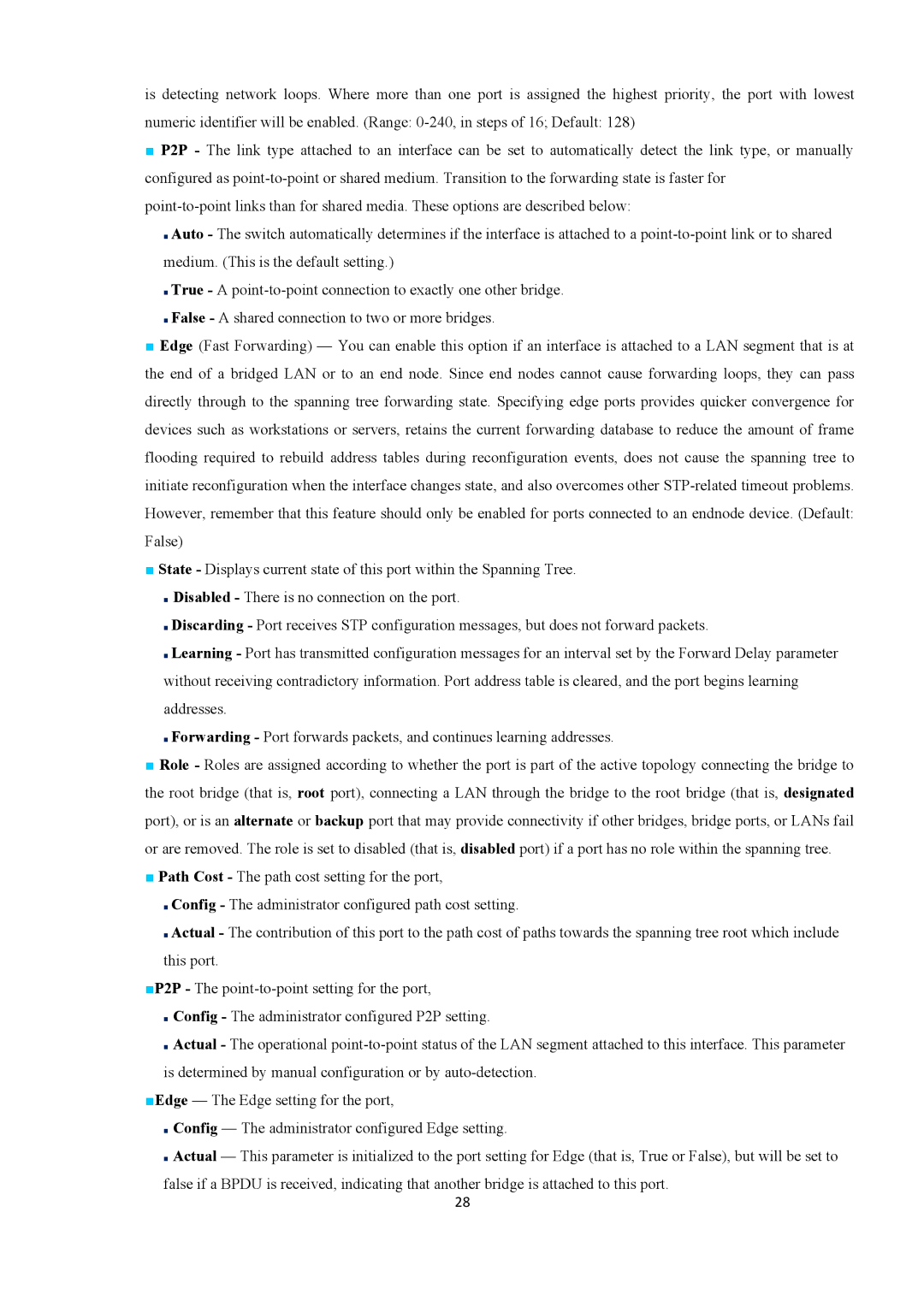is detecting network loops. Where more than one port is assigned the highest priority, the port with lowest numeric identifier will be enabled. (Range:
■P2P - The link type attached to an interface can be set to automatically detect the link type, or manually configured as
■Auto - The switch automatically determines if the interface is attached to a
■True - A
■False - A shared connection to two or more bridges.
■Edge (Fast Forwarding) — You can enable this option if an interface is attached to a LAN segment that is at the end of a bridged LAN or to an end node. Since end nodes cannot cause forwarding loops, they can pass directly through to the spanning tree forwarding state. Specifying edge ports provides quicker convergence for devices such as workstations or servers, retains the current forwarding database to reduce the amount of frame flooding required to rebuild address tables during reconfiguration events, does not cause the spanning tree to initiate reconfiguration when the interface changes state, and also overcomes other
■State - Displays current state of this port within the Spanning Tree.
■Disabled - There is no connection on the port.
■Discarding - Port receives STP configuration messages, but does not forward packets.
■Learning - Port has transmitted configuration messages for an interval set by the Forward Delay parameter without receiving contradictory information. Port address table is cleared, and the port begins learning addresses.
■Forwarding - Port forwards packets, and continues learning addresses.
■Role - Roles are assigned according to whether the port is part of the active topology connecting the bridge to the root bridge (that is, root port), connecting a LAN through the bridge to the root bridge (that is, designated
port), or is an alternate or backup port that may provide connectivity if other bridges, bridge ports, or LANs fail or are removed. The role is set to disabled (that is, disabled port) if a port has no role within the spanning tree.
■Path Cost - The path cost setting for the port,
■Config - The administrator configured path cost setting.
■Actual - The contribution of this port to the path cost of paths towards the spanning tree root which include this port.
■P2P - The
■Config - The administrator configured P2P setting.
■Actual - The operational
■Edge — The Edge setting for the port,
■Config — The administrator configured Edge setting.
■Actual — This parameter is initialized to the port setting for Edge (that is, True or False), but will be set to
false if a BPDU is received, indicating that another bridge is attached to this port. 28
